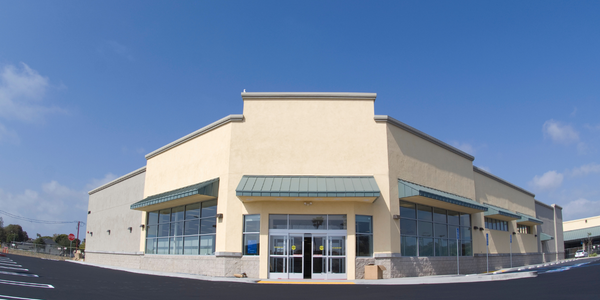Building Energy Management

Building energy management systems (BEMS) provide real-time remote monitoring and integrated control of a wide range of connected systems, allowing modes of operation, energy use, and environmental conditions to be monitored and modified based on hours of operation, occupancy, or other variables to optimise efficiency and comfort. Building energy management systems can also trigger alarms, in some cases predicting problems and informing maintenance programmes. They maintain records of historical performance to enable benchmarking of performance against other buildings or across time and may help automate report writing. BEMS are often integrated with building automation and control (BAC) systems, which have a broaded scope of operations.
- Energy
- Construction & Buildings
- Equipment & Machinery
- Logistics & Warehousing
The Global Energy Management Systems Market size is expected to reach USD 62.3 billion by 2023, from USD 25.9 billion in 2016, growing at a CAGR of 13.5% during the forecast period (2017-2023).
Source: Allied Market Research
The HVAC controls market was valued at USD 13.63 billion in 2018 and is expected to reach USD 27.04 billion by 2023, at a CAGR of 12.1% between 2018 and 2023.
Source: Markets & Markets
How is Building Energy Management Systems (BEMS) used by end users?
Automating room controls or guests as a method to manage energy costs. Lower shared automatically based on the time of day to mitigate the heat load on the room. When occupied, guests would have access to the remote control which would have modes such as "good night scene", "morning scene" and video recorder to see outside the room.
How is the success of this use case measured for users and for the business?
Success can be measured by increasing the operational and financial performance of buildings and by optimizing building operations while improving productivity.
Why do companies need a BEMS?
- To save money: a BEMS can efficiently control as much as 84% of the building's energy consumption. Furthermore, it performs its functions completely automatically, day in, day out, year after year without the need for much interaction.
- To control the energy usage: BEMS can record actual consumption data and then compare it against these profiles highlighting over or under usage.
- To be made aware of issues before they become problems: a BEMS should receive and communicate different levels of alarm conditions, allowing building owners or users to track conditions and respond quickly if the need arises.
- To provide assets with the correct environment: it provides owners with the satisfactory data that enables to control and monitor the building, whilst at the same time providing a suitable working environment for the people or objects within.
- To ensure building continuity: it allows the compatibility between new products with products already installed, removing the need to replace perfectly good equipment whilst at the same time securing investments already made in training and system knowledge.
- To integrate across all building services: systems should be able to integrate to 3rd party systems or products such as packaged units, underfloor heating (which prevents differing set points and system fighting), lighting control or Access system signals etc..
- To meet social and corporate responsibilities objectives: it provides reports and demonstrates visually how energy usage and carbon emissions are being reduced, helping to meet legislative and corporate social responsibility demands.
Building Owners and Property Managers: Building owners and property managers are primary stakeholders in building energy management, as they are responsible for the overall operation, maintenance, and investment decisions related to energy efficiency measures in buildings. They prioritize energy-saving initiatives to reduce operating costs, increase property value, and meet sustainability goals. Building owners and managers implement energy management strategies such as retrofitting, upgrades, and automation systems to optimize energy usage and improve building performance.
Facility Managers and Operations Staff: Facility managers and operations staff are responsible for the day-to-day management and maintenance of building systems, including HVAC, lighting, and controls. They play a critical role in implementing energy management programs, monitoring energy usage, and identifying opportunities for energy savings. Facility managers oversee the deployment of energy-efficient technologies, conduct energy audits, and optimize building operations to minimize energy waste and maximize efficiency.
What sensors are typically used to provide Room Automation data into the IoT system, and which factors define their deployment?
Sensors that control lighting, drapes, shades, thermostats.
What factors define the connectivity solutions used to provide both device-to-device and device-to-cloud communication?
Could be retrofitted with ZWAVE in a brownfield. Wireless is the most efficient even in a greenfield situation. Mesh communication system that is self-healing. If a node is broken or disrupted by another device it would be self-healing.
Energy Monitoring and Metering: Data collection is central to building energy management, with energy monitoring systems capturing real-time data on electricity, gas, water, and other utilities consumption. Smart meters, submeters, and energy monitoring devices track energy usage at various building levels, providing granular insights into consumption patterns, peak demand periods, and energy-intensive equipment. Continuous data collection enables building operators to identify inefficiencies, prioritize energy-saving measures, and track the effectiveness of energy management initiatives.
Sensor Networks and IoT Devices: Sensor networks and Internet of Things (IoT) devices play a crucial role in collecting environmental data related to temperature, humidity, occupancy, lighting levels, and indoor air quality. These sensors provide real-time data on building conditions, occupant behavior, and energy demand, enabling adaptive control strategies and dynamic optimization of building systems. IoT-enabled devices communicate with centralized energy management platforms, facilitating data aggregation, analysis, and decision-making.
What factors impact the installation of a Building Energy Management System (BEMS) in an existing building?
Installing sensors and actuators when the facility is operating can be challenging due to the potential disruption to operations. Disruption can be minimized by deploying the system floor by floor so only a section of the facility is closed at any given time.
Case Studies.





